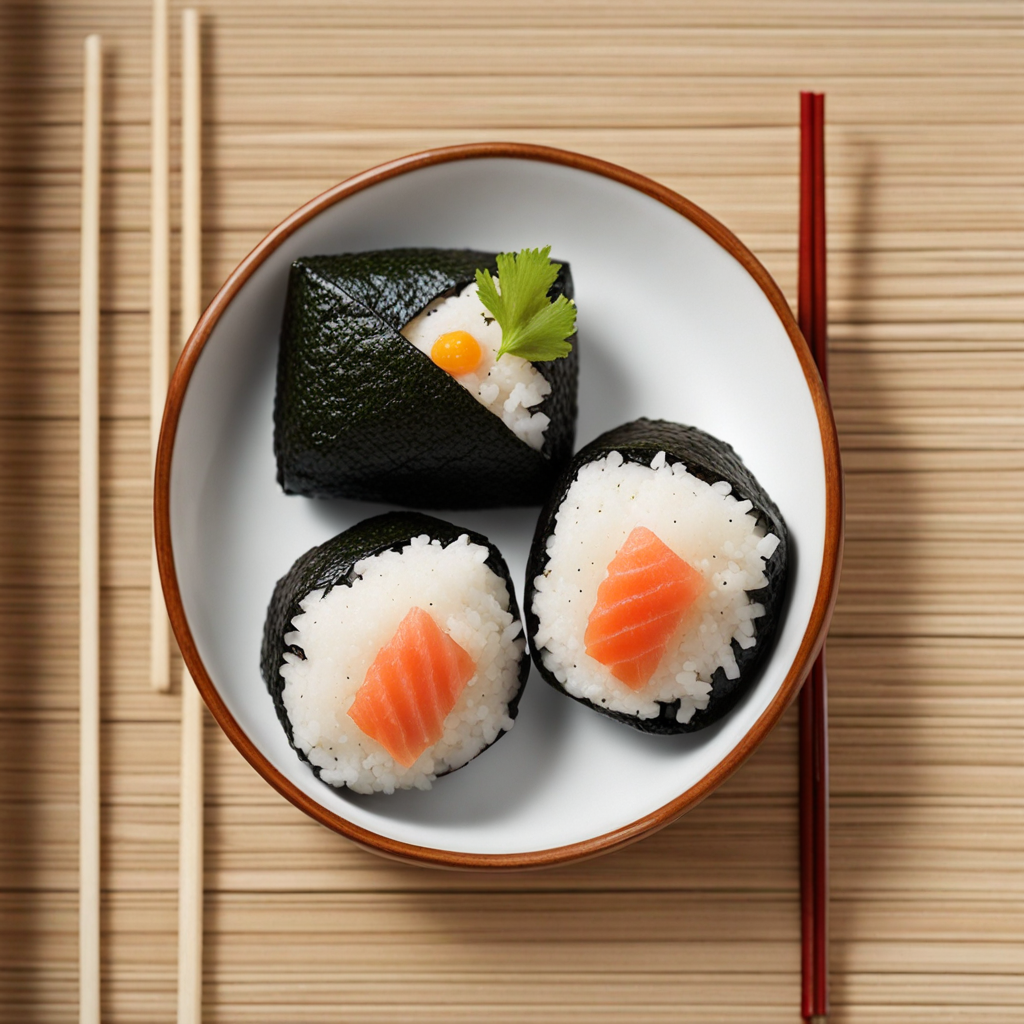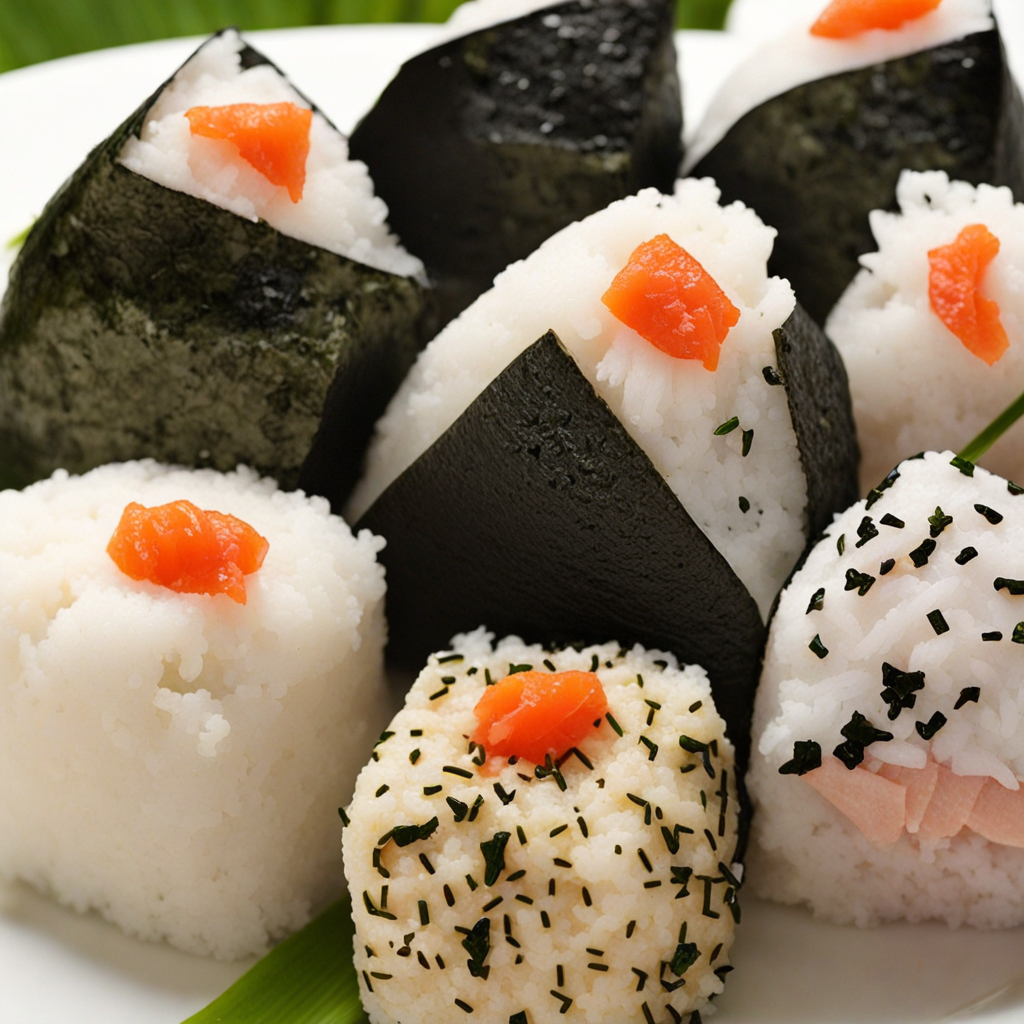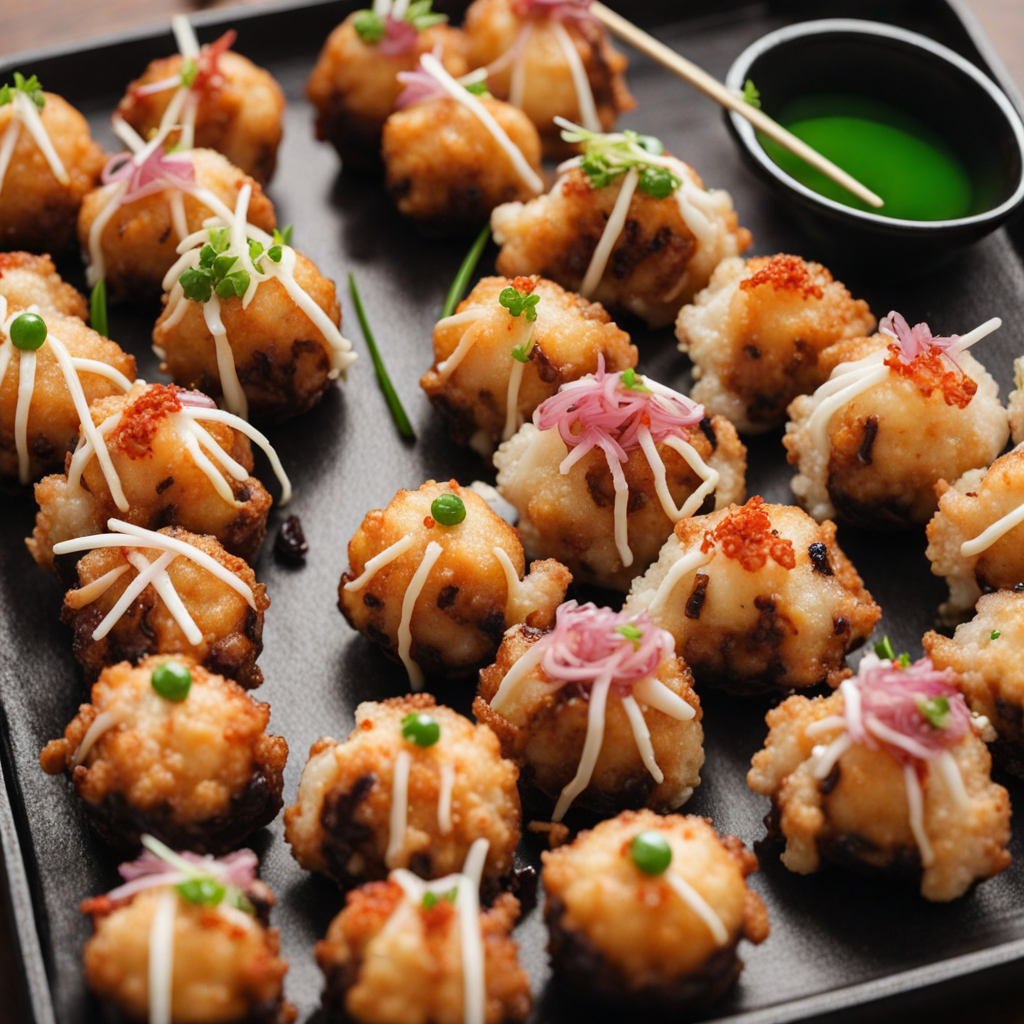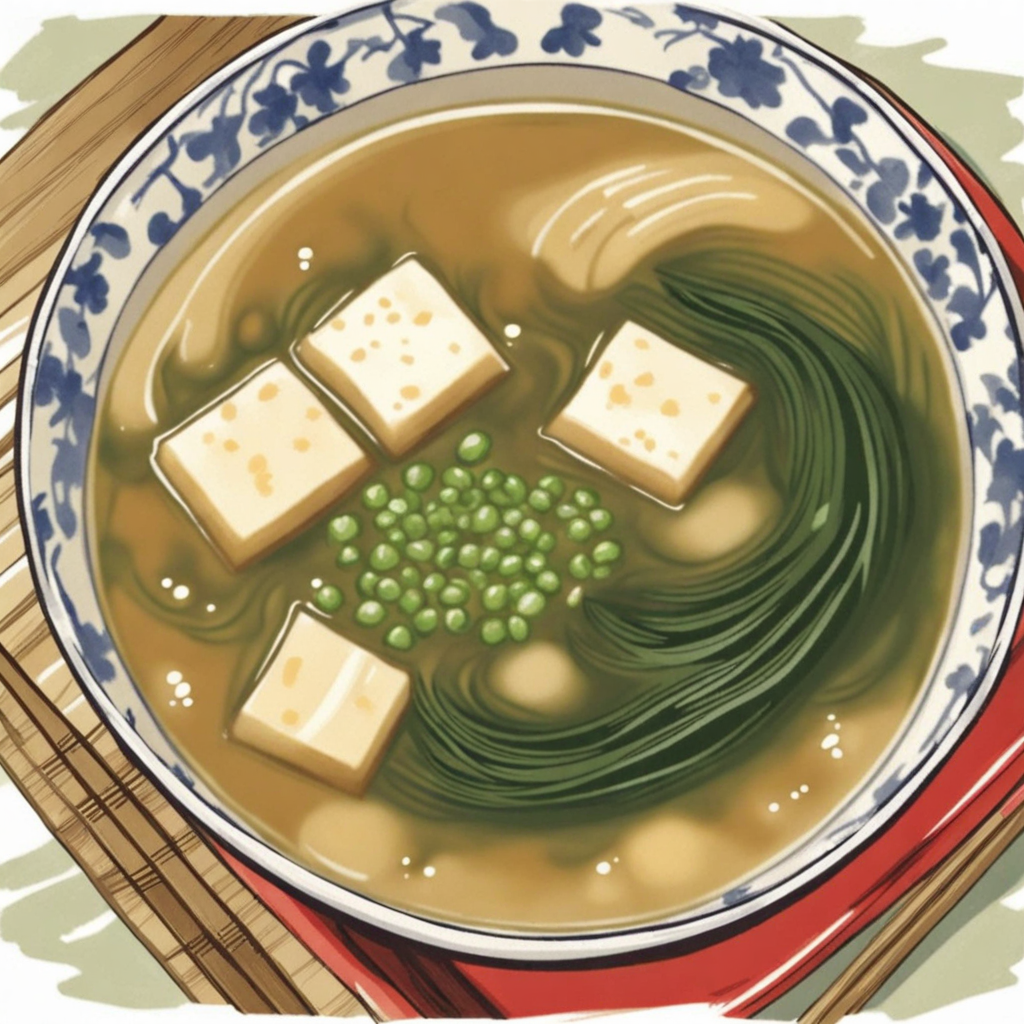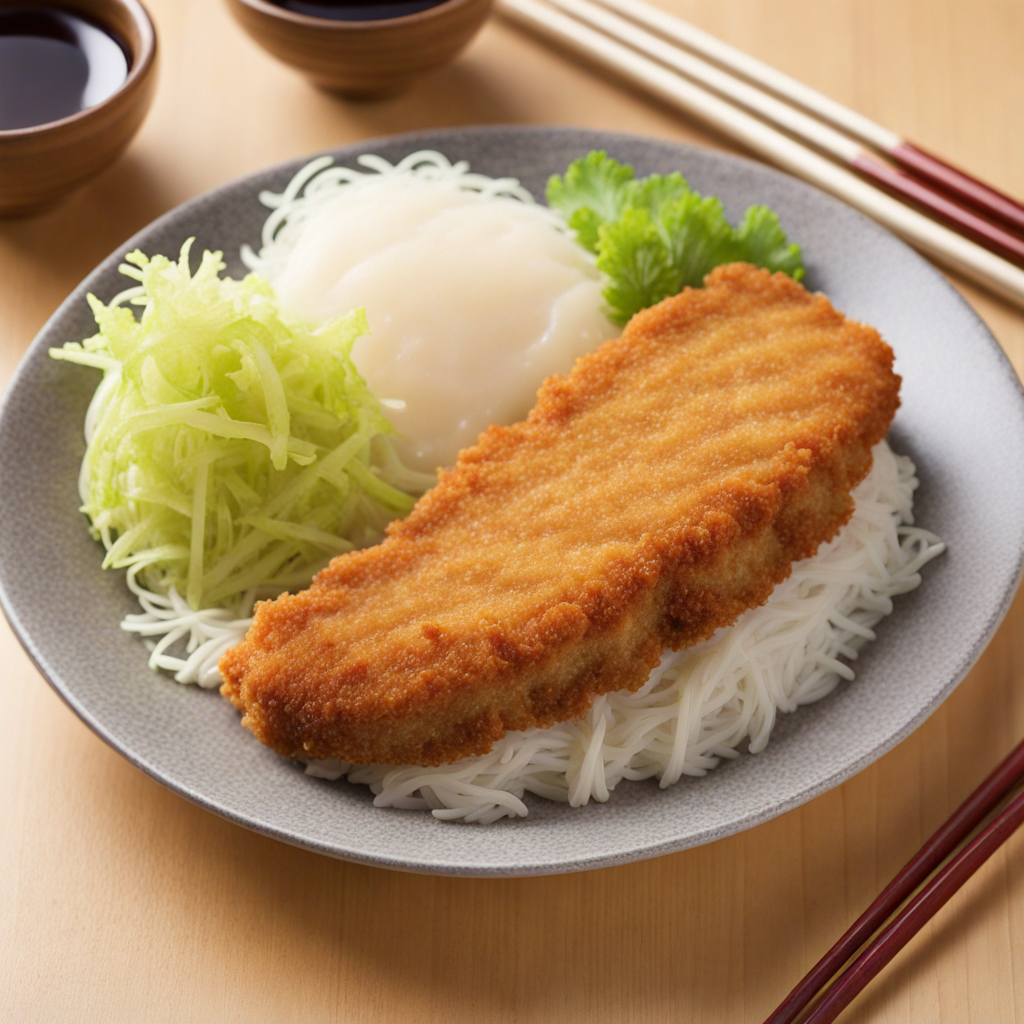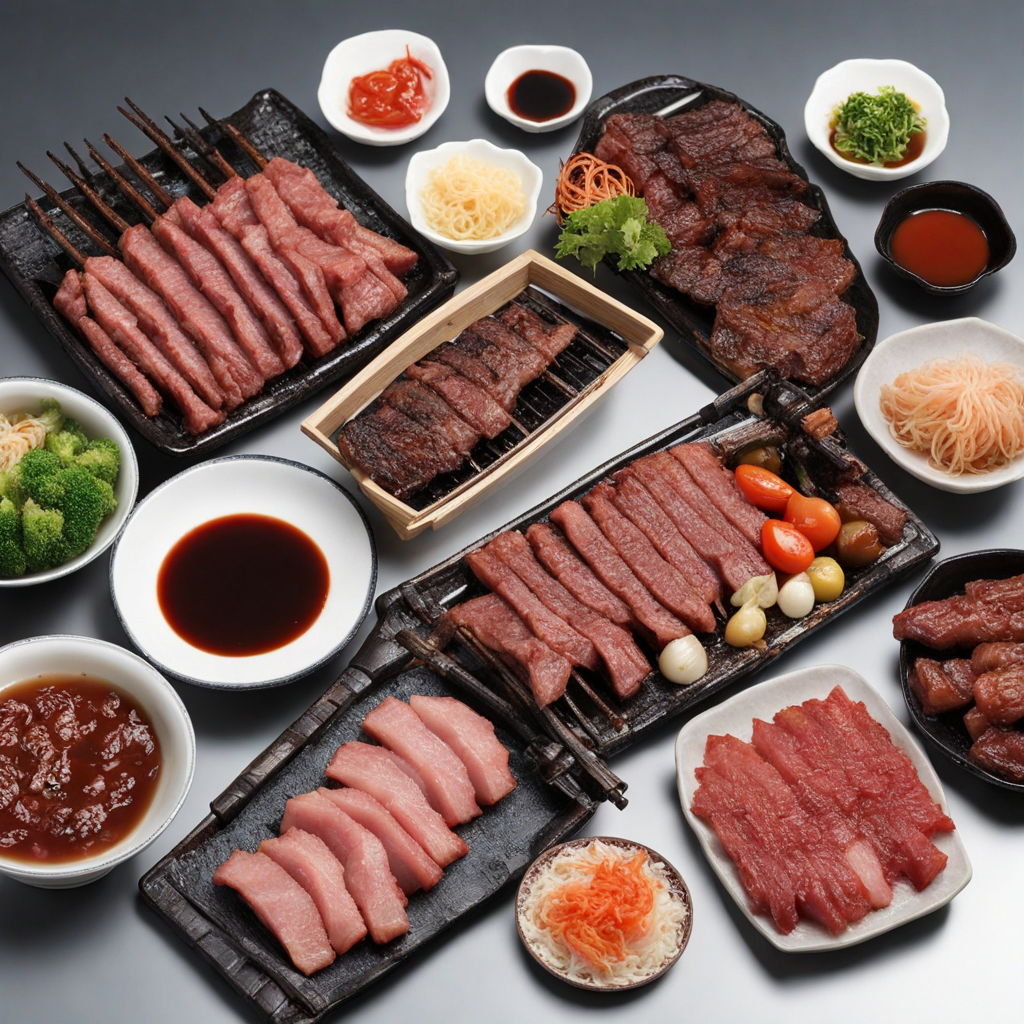Onigiri
Onigiri, often referred to as rice balls, is a delightful and portable Japanese dish that embodies simplicity and flavor. Made primarily from seasoned, cooked rice, onigiri is typically shaped into triangles or spheres and can be wrapped in a sheet of nori (seaweed) for added texture and taste. The rice itself is often seasoned with salt, which enhances its natural flavor, making it a comforting staple in Japanese cuisine. Its minimalist presentation belies the depth of taste that can be experienced in each bite, often evoking a sense of nostalgia for those familiar with Japanese home cooking. What sets onigiri apart is its versatility, as it can be filled with a variety of delicious ingredients. Common fillings include pickled plums (umeboshi), grilled salmon, tuna mayonnaise, and seasoned vegetables, which provide a burst of flavor that contrasts beautifully with the subtle taste of the rice. These fillings allow for endless customization, catering to both savory and slightly sweet preferences, making onigiri a perfect companion for lunchboxes or picnics. The combination of textures—from the slightly sticky rice to the crispy nori—creates a satisfying mouthfeel that keeps you coming back for more. Onigiri is not just about taste; it also represents a cultural experience tied to Japanese traditions. Often enjoyed as a quick snack or meal on the go, onigiri can be found at convenience stores and specialty shops across Japan, each offering unique variations that reflect regional flavors and ingredients. The ritual of making onigiri at home can also be a fun and engaging activity, as families come together to shape the rice and fill it with their favorite ingredients. Whether you enjoy it as a quick bite or as part of a larger meal, onigiri promises to introduce you to the comforting, heartwarming essence of Japanese cuisine.
How It Became This Dish
Origin of Onigiri The history of おにぎり (onigiri), a quintessential Japanese rice ball, dates back over a thousand years. Its origins can be traced to the Heian period (794-1185), when rice was a staple of the Japanese diet. During this era, cooked rice was often shaped by hand into balls or triangles, wrapped in leaves or other natural materials. These early forms of onigiri were not just a culinary delight; they served practical purposes, allowing farmers and travelers to carry nourishment easily during long journeys. The portability of onigiri made it ideal for a society that relied heavily on agriculture and movement. The term "onigiri" itself is derived from the Japanese verb "nigiru," meaning "to grasp" or "to mold," highlighting the hands-on nature of its preparation. While onigiri has roots in practicality, it soon evolved into a beloved food item symbolizing comfort and home. The shape and presentation of onigiri also varied regionally, reflecting the diverse landscapes and cultural practices across Japan. In some areas, onigiri were shaped into round forms, while in others, triangular shapes became more popular, a trend that persists to this day. \n\n Cultural Significance Onigiri holds significant cultural importance in Japan, transcending mere sustenance. It is often associated with traditional family meals, picnics, and festivals, being a staple in bento boxes. The act of making onigiri can be a familial bonding experience, as generations pass down recipes and techniques. In many Japanese households, it is common for parents to prepare onigiri for their children to take to school, symbolizing care and love. Moreover, onigiri has found its place in Japanese folklore and literature. It is often depicted in traditional stories, reflecting the connection between food and culture. For instance, the famous Japanese fairy tale "Momotaro" features onigiri as a source of energy for the protagonist during his adventures. This narrative reinforces the idea that onigiri is not simply food; it embodies strength, resilience, and the spirit of togetherness. \n\n Development Over Time As Japan underwent social and economic changes, so too did onigiri. During the Edo period (1603-1868), the rise of urban centers led to the establishment of food stalls and vendors selling onigiri, making it more accessible to the masses. This commercialization contributed to the diversification of flavors and fillings, as vendors experimented with a variety of ingredients, including pickled vegetables, seafood, and even meats. In the modern era, onigiri has continued to evolve, adapting to contemporary tastes and lifestyles. The post-World War II period saw a rise in convenience foods, and onigiri was no exception. The introduction of plastic wrapping and pre-packaged onigiri made it even more convenient for busy urban dwellers, leading to the proliferation of onigiri available in convenience stores across Japan. This accessibility has contributed to its status as a beloved snack for people of all ages. \n\n Regional Variations One of the most fascinating aspects of onigiri is the regional variations that exist throughout Japan. Different areas have developed their unique styles, fillings, and even methods of preparation. For example, in Hokkaido, onigiri is often filled with salmon roe (ikura), reflecting the region’s rich seafood resources. Meanwhile, in the Kansai region, you might find onigiri filled with pickled plum (umeboshi), a traditional and tangy choice that has been enjoyed for centuries. In addition to fillings, the way onigiri is presented can vary widely. Some regions favor simplicity, while others embrace elaborate decorations and shapes. Seasonal ingredients also play a role in onigiri preparation, with certain fillings becoming popular during specific times of the year. Festivals often feature onigiri made with local ingredients, celebrating the agricultural bounty of each region. \n\n Onigiri in Popular Culture In recent years, onigiri has gained international attention, becoming a symbol of Japanese cuisine beyond its borders. The rise of Japanese pop culture, including anime and manga, has introduced onigiri to global audiences, showcasing it as a beloved comfort food. This exposure has led to a growing interest in onigiri-making, with many enthusiasts experimenting with their unique twists on the traditional recipe. Social media has played a pivotal role in the resurgence of interest in onigiri, with food bloggers and influencers sharing their creative takes on this classic dish. From colorful rice balls filled with unconventional ingredients to beautifully shaped onigiri adorned with artistic designs, the possibilities are endless. This modern reinterpretation of onigiri not only preserves its cultural significance but also encourages innovation and creativity in the kitchen. \n\n Health and Nutritional Aspects Onigiri is also celebrated for its nutritional value. Made primarily from rice, it provides a good source of carbohydrates, which are essential for energy. Depending on the fillings used, onigiri can also offer a range of vitamins, minerals, and proteins. Onigiri can be made using brown rice or mixed grains, catering to health-conscious consumers and those seeking more fiber in their diets. Additionally, the versatility of onigiri allows for the incorporation of various food groups. Vegetables, fish, and even fermented ingredients can be used as fillings, promoting a balanced diet. The ability to customize onigiri according to personal preferences and dietary restrictions has contributed to its enduring popularity. \n\n Conclusion In conclusion, onigiri is more than just a rice ball; it is a reflection of Japanese history, culture, and innovation. From its humble beginnings as a practical food for travelers to its status as a beloved comfort food, onigiri has evolved while retaining its cultural significance. As it continues to adapt to modern tastes and trends, onigiri remains a symbol of nourishment and love, connecting generations through shared meals and cherished memories. Whether enjoyed at a picnic, in a bento box, or as a quick snack, onigiri encapsulates the essence of Japanese culinary tradition and the spirit of home.
You may like
Discover local flavors from Japan


